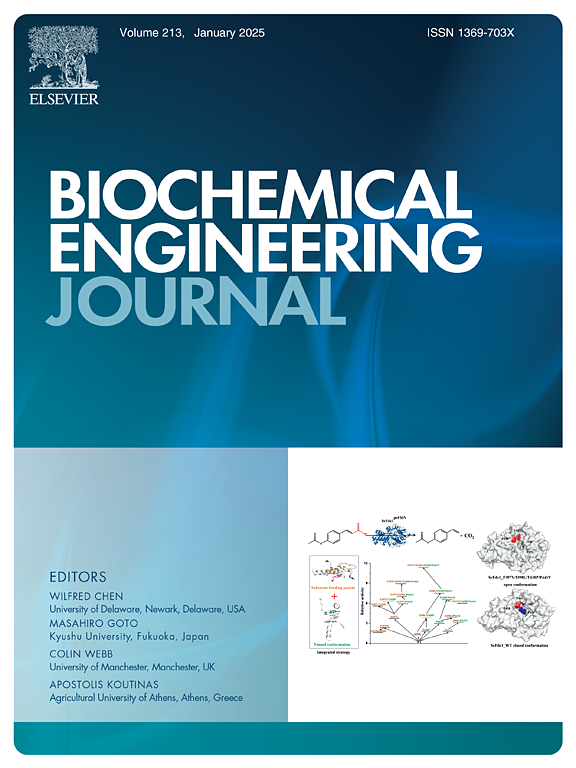Influence of impeller design on oxygen transfer in a stirred water tank with square cross-section
IF 3.7
3区 生物学
Q2 BIOTECHNOLOGY & APPLIED MICROBIOLOGY
引用次数: 0
Abstract
This paper presents an experimental study on the mass transfer performance in a gas-liquid stirred vessel. Three impellers – circular with flat blades, rectangular with slightly curved blades, and trapezoidal with flat perforated blades – were tested for two aspect ratios of the water column inside a tank. The study aimed at identifying the type of impeller and operating conditions that maximize the aeration efficiency of vortex aerators and at verifying whether the usage of impellers with perforated blades could decrease the energy consumption while maintaining a good aeration efficiency. The results revealed the existence of two critical impeller speeds. At the first critical speed, the operating regime changes from subcritical or non-aerated to supercritical or aerated. The vortex specific interfacial area increases almost linearly up to the second critical speed and then tends to stabilize. The impeller with perforated blades did not confirm the expectations, its efficiency being very poor. The rectangular impeller was the most efficient in the subcritical regime. The circular impeller performed better in the supercritical regime. These two impellers were found to operate roughly in the same range as other conventional impellers for an aspect ratio of 1. This finding, coupled with the geometrical simplicity, recommends the circular and rectangular impellers for usage in tank aerators and, possibly, in bioreactors.
求助全文
约1分钟内获得全文
求助全文
来源期刊

Biochemical Engineering Journal
工程技术-工程:化工
CiteScore
7.10
自引率
5.10%
发文量
380
审稿时长
34 days
期刊介绍:
The Biochemical Engineering Journal aims to promote progress in the crucial chemical engineering aspects of the development of biological processes associated with everything from raw materials preparation to product recovery relevant to industries as diverse as medical/healthcare, industrial biotechnology, and environmental biotechnology.
The Journal welcomes full length original research papers, short communications, and review papers* in the following research fields:
Biocatalysis (enzyme or microbial) and biotransformations, including immobilized biocatalyst preparation and kinetics
Biosensors and Biodevices including biofabrication and novel fuel cell development
Bioseparations including scale-up and protein refolding/renaturation
Environmental Bioengineering including bioconversion, bioremediation, and microbial fuel cells
Bioreactor Systems including characterization, optimization and scale-up
Bioresources and Biorefinery Engineering including biomass conversion, biofuels, bioenergy, and optimization
Industrial Biotechnology including specialty chemicals, platform chemicals and neutraceuticals
Biomaterials and Tissue Engineering including bioartificial organs, cell encapsulation, and controlled release
Cell Culture Engineering (plant, animal or insect cells) including viral vectors, monoclonal antibodies, recombinant proteins, vaccines, and secondary metabolites
Cell Therapies and Stem Cells including pluripotent, mesenchymal and hematopoietic stem cells; immunotherapies; tissue-specific differentiation; and cryopreservation
Metabolic Engineering, Systems and Synthetic Biology including OMICS, bioinformatics, in silico biology, and metabolic flux analysis
Protein Engineering including enzyme engineering and directed evolution.
 求助内容:
求助内容: 应助结果提醒方式:
应助结果提醒方式:


